

Home - Product Owner Survival Camp. We try the exercises of #POsurvivalCamp - Forum - Product Owner Survival Camp. @airfrance we try the exercises of on a whiteboard, to get right before starting using these for a new mobile app.
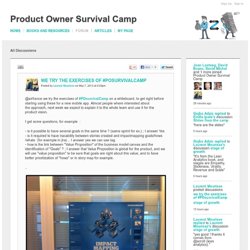
Almost people where interested about the approach, next week we expect to explain it to the whole team and use it for the product vision. I get some questions, for example : - is it possible to have several goals in the same time ? (same sprint for ex.) ; I answer Yes - is it required to have tracability between stories created and impactmapping goals/hows/whats (for exemple in jira) .. I answer yes we can use tag - how is the link between "Value Proposition" of the business model canvas and the identification of "Goals" ? On impact and behaviour. Slides from the camp - Forum - Product Owner Survival Camp.
The February Revolution. The Real Question is Why? In the 1990s we were at an all time low in the software development industry.
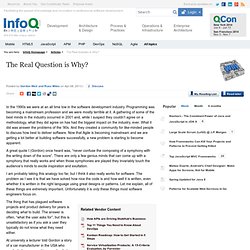
Programming was becoming a mainstream profession and we were mostly terrible at it. A gathering of some of the best minds in the industry occurred in 2001 and, while I suspect they couldn’t agree on a methodology, what they did agree on has had the biggest impact on the industry, ever. What it did was answer the problems of the ‘90s. And they created a community for like-minded people to discuss how best to deliver software. Now that Agile is becoming mainstream and we are getting a lot better at building software successfully, a new problem is starting to become apparent. A great quote I (Gordon) once heard was, “never confuse the composing of a symphony with the writing down of the score”. I am probably taking this analogy too far, but I think it also really works for software. The thing that has plagued software projects and product delivery for years is deciding what to build.
» impact mapping :get LIT. Collaborate.
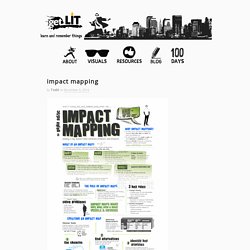
Strategize. Plan. Focus. My visual notes for Impact Mapping - Google Groupes. February revolution, part 2. In the previous post I wrote about the key conclusions from the recent meeting on delivering software that makes a big impact.
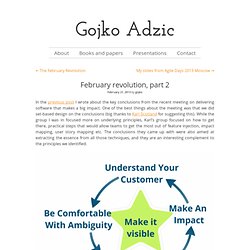
One of the best things about the meeting was that we did set-based design on the conclusions (big thanks to Karl Scotland for suggesting this). While the group I was in focused more on underlying principles, Karl’s group focused on how to get there, practical steps that would allow teams to get the most out of feature injection, impact mapping, user story mapping etc.
The conclusions they came up with were also aimed at extracting the essence from all those techniques, and they are an interesting complement to the principles we identified. (click on the image to download a larger version, feel free to use it in your slides, presentations etc). The sweet-spot for all the techniques we discussed seems to be enabling these practices, and creating a self-reinforcing loop of better customer understanding and collaboration. Understand your customer Co-create Learn fast.
Impact Mapping - Google Groupes. Tools. Impact Mapping. Howto… Keep Value Traceability in Lean Design. In Software, we are very proud of traceability.
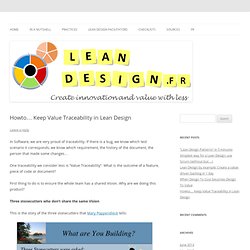
If there is a bug, we know which test scenario it corresponds, we know which requirement, the history of the document, the person that made some changes… One traceability we consider less is “Value Traceability”. What is the outcome of a feature, piece of code or document? First thing to do is to ensure the whole team has a shared Vision. Why are we doing this product? Three stonecutters who don’t share the same Vision This is the story of the three stonecutters that Mary Poppendieck tells: Our first step is to understand that we are building a cathedral.
First, Share the Vision of the Cathedral with an Impact Mapping Since few weeks, to define the Cathedral I use Impact Mapping tool from Gojko Adzic. Next step: Keep the end to end Traceability with your Features Then, you can prioritize your Objectives and take Actors and Processes to create a Story Mapping. Agile Testing & BDD eXchange 2012: Gojko Adz.